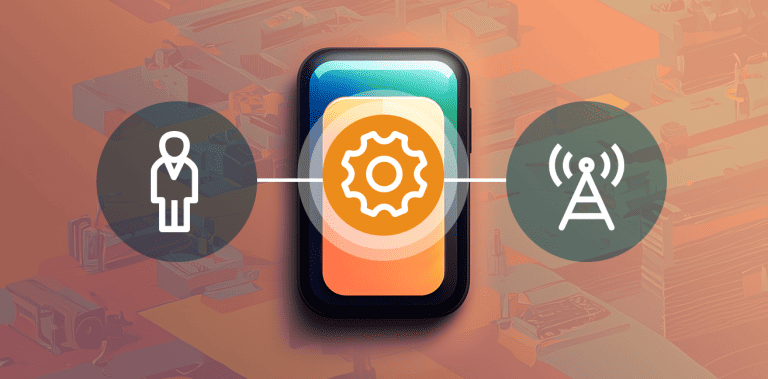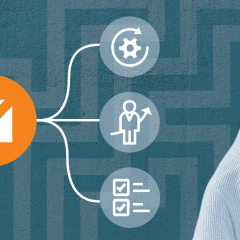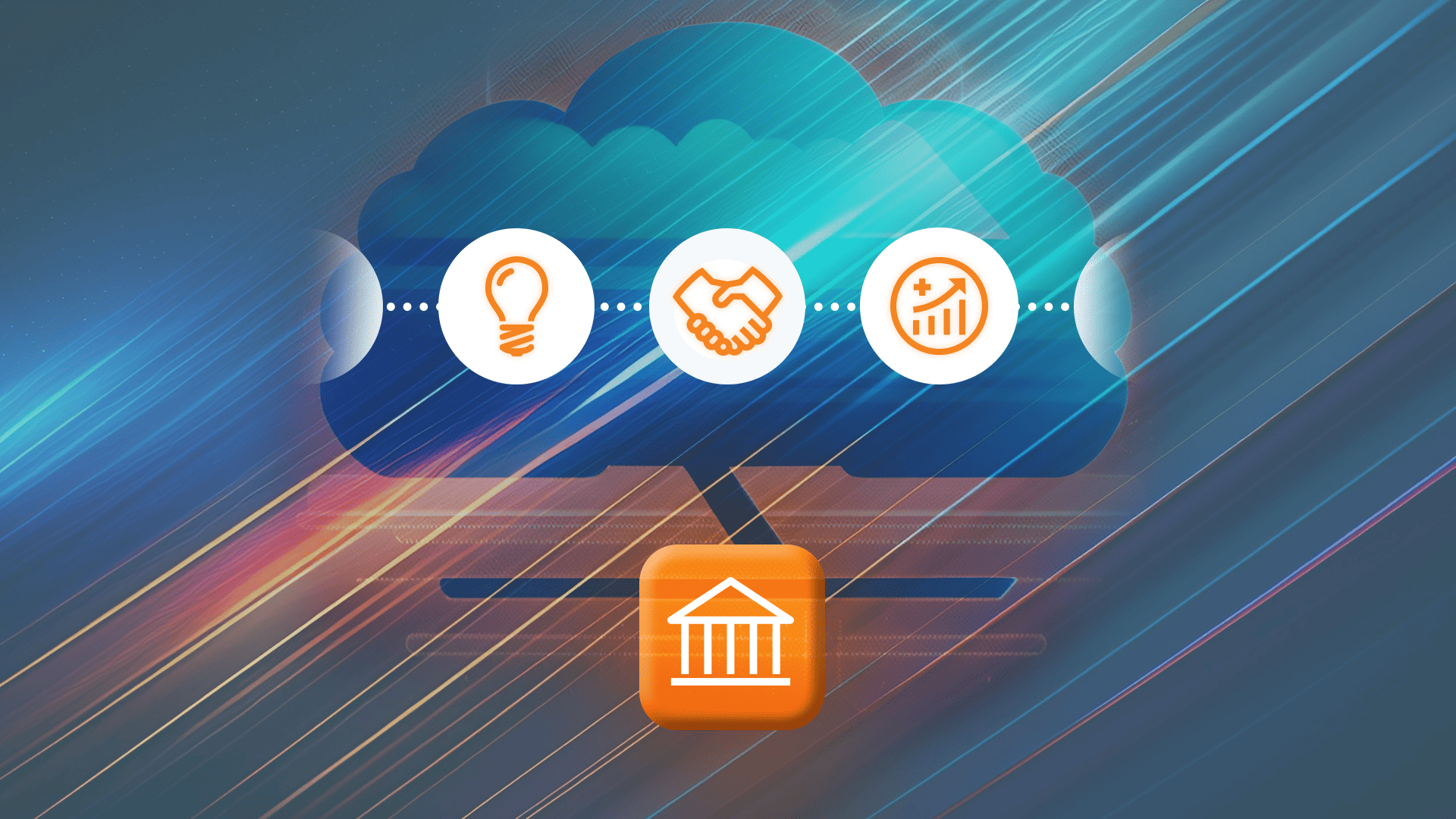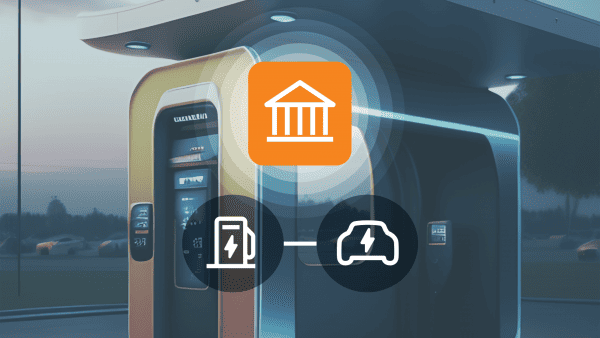Sometimes a new communications technology is nice to have, and sometimes it suddenly becomes a global lifeline for millions, even billions. So today, in honor of its role in keeping us all employed and connected during a pandemic (and war), we are going to talk about the evolution and massive growth of mobile — and of the MVNO. Along the way, we’re also going to tell you about a new project PortaOne has launched that will help speed up that growth even more. Namely, mobile account self-care.
Getting Up to Speed on MVNOs
First of all: what is an MVNO? It stands for mobile virtual network operator, and while the concept has really cracked open in the past few years, this type of telecommunications business has been around since the 1990s. (A forerunner of the modern MVNO was born in Norway in 1998.) MVNOs are mobile services resellers and other mobile providers that don’t own any network infrastructure. (Hence the “virtual” part of mobile virtual network operator.) Instead, they lease capacity from traditional MNOs — the network operators that actually own all the wires and towers. A classic MVNO type would be a regional reseller of prepaid SIM cards and data plan bundles. They buy capacity at wholesale rates, then sell tons of it cheap for a small profit.
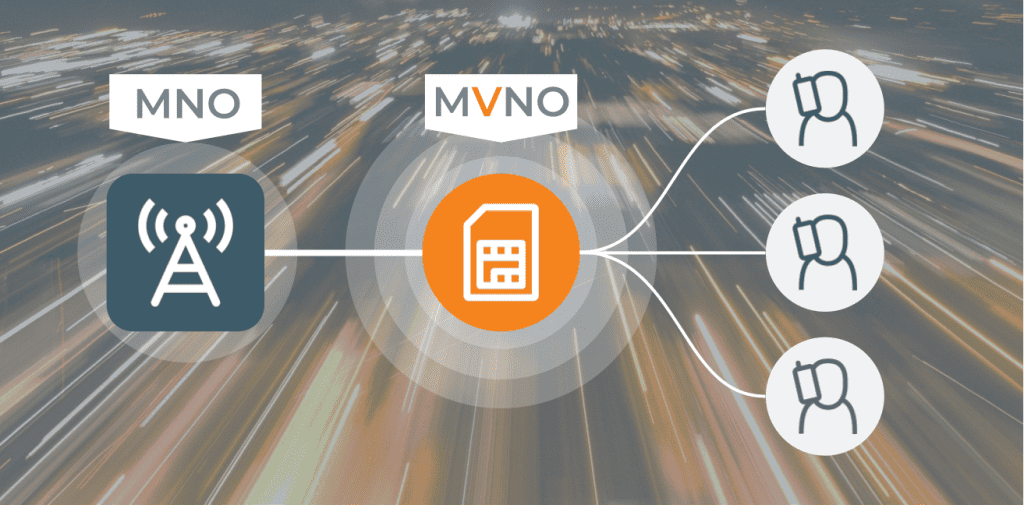
But there are also new MVNO types that are offering other kinds of mobile-enabled programs and services. Some of these are staying in the minutes-and-data game but are adding more regional value to what the bigger and less flexible MNOs can provide. (Think: customer service in a local language, payment options suited to regional preferences, discount partnerships with local stores, and so on.) Others are ditching traditional calling altogether and leveraging mobile for things like multi-store loyalty shopping awards programs. Or they’re using insider expertise on their team to help support telematics or IoT sensor connectivity within an industry. Maybe they’re enabling enterprise customers to have their own distributed private networks. Or? Whatever else someone out there is thinking up to offer.
The idea here is, well, the idea. Because you don’t need to invest in infrastructure, if you have an idea for a mobile service, you can make it happen. That “blue-sky possibility” is what’s driving the real potential for growth in the MVNO sector.
The “Mobile” Part of MVNO
And while the “virtual” part of MVNO is what makes it simple for anyone to launch a new communications product, the “mobile” part is what’s making people hungry for those new services.
It’s true: the mobile market is huge and getting huger. In 2019, the number of mobile phone users crossed over the 3.5 billion mark. Within a couple of years, mobile users are expected to reach 7.5 billion. (That’s almost all of today’s global population, including babies!) Thanks to mobile, all of those people will be able to stay connected no matter where they are or what they’re doing. Are you on a North American road trip and want to find the best tuna sandwich on Route 50 before lunch hour? You can. Want to post a selfie on your way up the trails of Mont Blanc? You can.
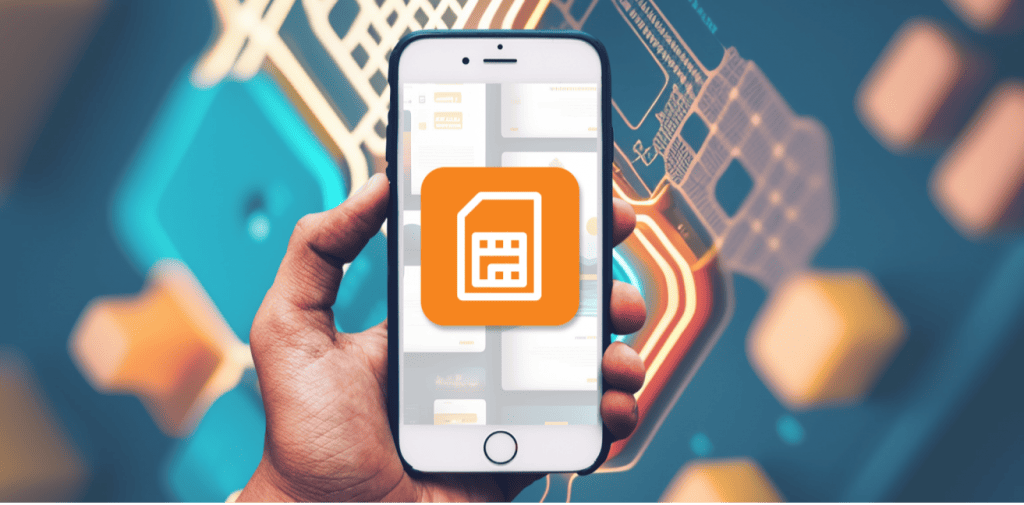
And if you want to continue to earn an income while bombs are forcing you to bunker in a bathtub or even flee your town? Thanks to mobile, you can do that too. In Ukraine — the home country of many PortaOne employees (including the author of this blog story) — mobile internet has become a reliable way for tech teams from many IT companies like ours to stay online despite the power outages we have experienced due to russian aggression. That means people can keep working (and keep the businesses they support in operation) despite massive fixed infrastructure challenges.
With fires and floods and windstorms on the increase worldwide, that freedom and flexibility is only going to get more important.
Which Brings Us to the Need for MVNO Speed
So we suppose it’s obvious that the mobile business is going to keep on growing. According to one estimate, there will be about 2,000 MVNO providers in the world by 2025. Honestly, we think that’s low, given our own direct experience. Already we have helped dozens of MVNOs get off the ground, and we’ve only been supporting this sector since 2016. Right now we are supporting MVNOs in Europe, North America, Australia, and Africa. (And we’d be supporting some more in South America already if only the writer of this post hadn’t missed so many Spanish classes at uni.).
All that to say, we know the secret ingredient for success and profit in the MVNO business. And that ingredient is: speed.
Let us borrow some words from the author of one of our past blog stories. “The sweet spot is to ride the trend at exactly the right time. That’s when you can hit the jackpot.”
What Do You Really Need to Launch an MVNO?
When it comes down to the basics, to get an MVNO off the ground you only need four things:
- Payment collection / invoicing
- Basic charging
- A CRM
- And some way to integrate with your MNO’s provisioning or order management system
If you have those, you can go into business.
But here’s the thing: that’s just on your end, as the business owner. On your customer’s end, it’s a different story. As a mobile user in the XXI century, you’re going to want to have access to some basic information about your account. And you also want the ability to access that information right from your device. (The days of going into some storefront to check your account or pay your bill are obviously over.) Plus, you’re going to want to be able to check your account without having to take any complicated technical steps, like sending USSD codes.
So, while you might be able to launch an MVNO with just a few basic tools, those tools might not be enough to win you any real business. (Remember those 2,000+ MNVOs? They’re also your competitors. And any edge you have in this business is slim.) To be successful, you have to make things easy on your customer. And you also have to give them a sense of control over their account.
That’s where this story comes around at last to mobile account self-care, and what PortaOne is doing about it. Mobile account self-care might not be a basic necessity in terms of functionality, but it is what your customers want. And if your customer wants it, you should want to give it to them.
Why PortaOne Decided to Invest in Mobile Account Self-Care
PortaOne has already been offering a user self-care portal for years. But, until recently, our default self-care portal was designed mainly for VoIP businesses. And we have to be honest with ourselves: it was not exactly ideal for mobile users.
In today’s telecommunications world, having anything that is “not exactly ideal for mobile” is, well, not exactly ideal at all. As MVNOs started to take up a growing share of our client and partner list, we began to notice that many of those businesses were building their own native apps or portals for their customers. And that’s great. After all, easy integration with any kind of platform or custom app you want is why we have such a flexible API. In fact, you could say it’s one of our main selling points.
But in terms of supporting MVNO success, it just wasn’t good enough. Remember what we’ve been saying about speed? If you want to succeed as an MVNO, you have to get to market fast. As it turns out, building a lovely, functional, and branded mobile account self-care web portal takes time. And building a lovely, functional, and branded native app for iOS and Android takes even more time.
That’s time you don’t have if you are planning to launch fast.
So, we decided to invest our own time and effort into building a mobile2 version of our existing self-care portal — meaning it is designed for customers who are using service on a mobile network that is accessible from a mobile smartphone. By investing our time and effort, we can make sure the MVNOs we support won’t have to invest theirs. After all, speed = long-term MNVO success, and long-term MVNO success = a long-term client for us. We can only do well if you do well.
What Should Our Mobile Account Self-Care Portal MVP Look Like?
A fast launch philosophy relies on the MVP: the minimum viable product. Rather than fiddle with a product until it is perfect (which, in the quick moving world of technology, it will never be), PortaOne believes in getting a product to market fast, getting people or businesses to use it, and then letting those people and businesses tell us how to make it better.
(We think this same philosophy is the right one for MVNOs, too, by the way. The MVNO sector is at heart a start-up sector. And, as TechCrunch says, start-ups are like sharks: they have to keep swimming to survive.)
So, once we knew we were going to create a mobile account self-care portal, our team had to make two quick decisions:
- Browser-based or native app?
- What exactly should it do, at an MVP level?
Let’s consider each point.
1. Browser-based or native app?
We’ll start with the answer: we went with the browser. Why? As Tim Davidson writes, “web applications can do almost everything that native apps can, plus they’re cheaper to develop.”
Davidson writes a lot more than that, actually. Let’s sum up his arguments (plus a few of our own) for browser over app:
Apps cost more (in time and money)
Native apps will always be more expensive to build, because you will always have to build separate apps for iOS and Android. “But what about frameworks like Flutter that you can use to create hybrids?” you might ask. Okay, true… and we have used Flutter ourselves for building our PortaPhone app.
But apps still require a lot of time and effort to fine-tune and test them on both operating systems. Which, of course, results in higher costs. Plus, beyond that, you also have to consider the lead-up time you need to publish each app in its respective app store. In some cases, that can take months.
Apps are challenging to update and upgrade
And when we say challenging, we mean for both developers and users. On our side (and thus on the MVNO side), app updates can involve downtime. On the end user side, they’re going to have to download a new version of the app every time we implement a minor update. For those who use a metered LTE service — which is very common in many regions — that can lead to megabytes worth of cost. It’s a recipe for frustration. (Especially in the early stages of the app, when there are a lot of fast-paced updates and fixes.)
The app stores take a bite
That big chunk missing out of the side of the Apple logo has more than one meaning. When you sell an app through an app store, the store doesn’t just take a share of the purchase price. (Consider that most apps are free.) They also often take a share of future purchases made through that app.
In the case of an MVNO, that could mean that the app store takes a share every time one of their customers tops up their balance. Apple takes a 30% commission on any sales made through its platform. Google’s rate is slightly kinder at 15%. Either way, that much of a cut of your ongoing revenue doesn’t sound like a recipe for MVNO success.
“I don’t want another app on my phone!”
It’s a cry heard ’round the world. You might have said this yourself the last time you were asked to download an app to park your car or pick up your falafel. How many apps are living on your phone that you have only used once or twice? It can get so cluttered that you have trouble finding the apps that you do actually use.
To get your users to overcome that resistance and actually download your app, you’re probably going to have to invest in some marketing. And that means more time, and more investment.
So, browser-based web portal it is, at least for now. Which brings us to question #2.
2. What should our MVP do?
When we start working with a new company, the first thing we kick into gear is our discovery phase. This is where we analyze everything we can about our new customer. That includes business processes, product definitions, how products should be configured, and so on.
Through that process, iterated with many different MVNOs as we have onboarded them, we have gleaned a pretty big-picture view of what MVNOs want to offer in a mobile account self-care portal. So, obviously, those top-line wishes became our starting point. (Yes, you understand correctly: our initial wish list kind of wrote itself.)
What Our First List Looked Like
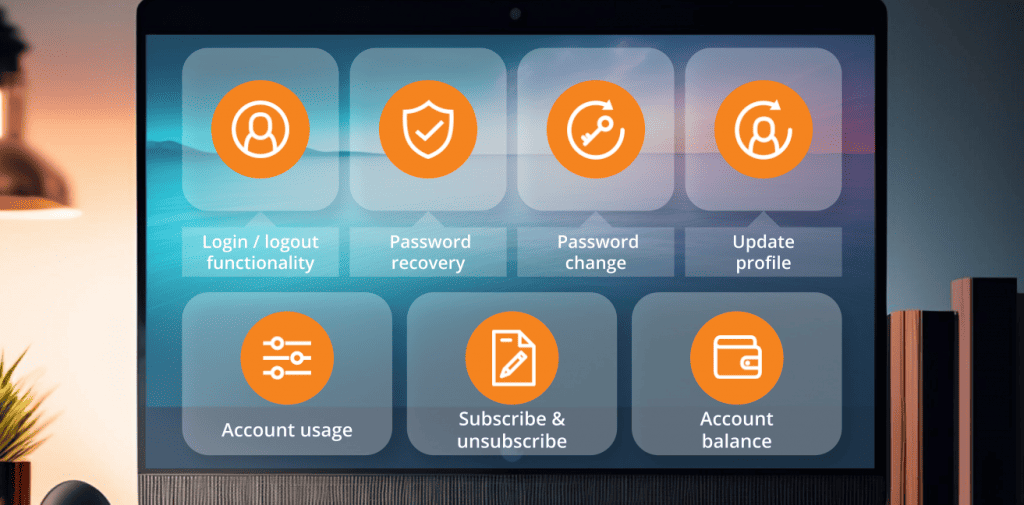
Here’s what we started out with:
Login/logout functionality: That’s your username and password credentials. Kind of an obvious one: no portal can exist without this.
Password recovery: If you’re like this author and forget your passwords a lot, you know this one is a must as well.
Password change: Many service providers print out a customer’s initial portal password on their first SIM card. That’s not very secure, so we knew the end user would need to be able to switch that up right away.
Update profile: We also know that end users want to be able to review and update their name, email address, and so on.
Account usage: The main reason any user comes to a mobile account self-care portal is to check their usage status: how much data they have left, how many minutes they have used, and so on. As a mobile subscriber, you need to know whether or not you can stream that YouTube recap of your favorite reality TV show.
Subscribe/unsubscribe: And if you are running out of data and you really want to know what happened in that episode? You’ll need to be able to buy more. So, our MVP needs to offer the ability for users to check out some new bundles and click that magic “activate” button.
Account balance: Finally, our user needs to know how much money they have left in their account. And also the ability to top up their balance with a scratch card they can buy at the supermarket down the street.
Those were all the basic needs on the MVNO side. On our side, we wanted it to have a modern design, to be user friendly on a small screen, and to open problem-free on any mobile device. And there you have it: our MVP.
What Our “Next” List Looks Like
In future releases, we’re planning to add more functionalities, staring with:
- Transaction history so that the user can see their expenses and track their payments and top-ups.
- Balance transfer so that when a friend or family member runs out of funds, the user can share their balance with them.
- Transferring unused bundle units for the same reason as above.
- Balance top-ups using a new or saved payment method to expand how users can keep their accounts going
- Configuring auto-payments for users who don’t want to bother with the work of topping up.
- Bundle top-ups using the user’s balance (you are probably getting the idea: we want to make payments as convenient as possible for as many users as possible).
Oh, and wait! We forgot to add language support. In the first release the portal is only available in English, but we will be able to add more languages easily, based on who asks us for one.
What’s Next for Mobile Self Care?
Obviously, as MVNOs start to really push the edges of that “blue sky possibility,” our mobile account self-care portal will have to expand further. After all, it’s one thing for a human mobile device user to want to top up their minutes, it’s something very different for an AI-enabled EV to check in on its own battery charging status or for a homeowner to set up the parameters for when their fridge automatically orders home delivery of groceries. (Just to invent two not-so-sci-fi scenarios.)
If you want to see our mobile account self-care portal for yourself, you just have to visit the PortaOne Add-on Mart, or contact our customer service team using the form below for a demo. And if you have thoughts for what you’d like to see in a mobile customer self-service portal, we want to hear from you!

